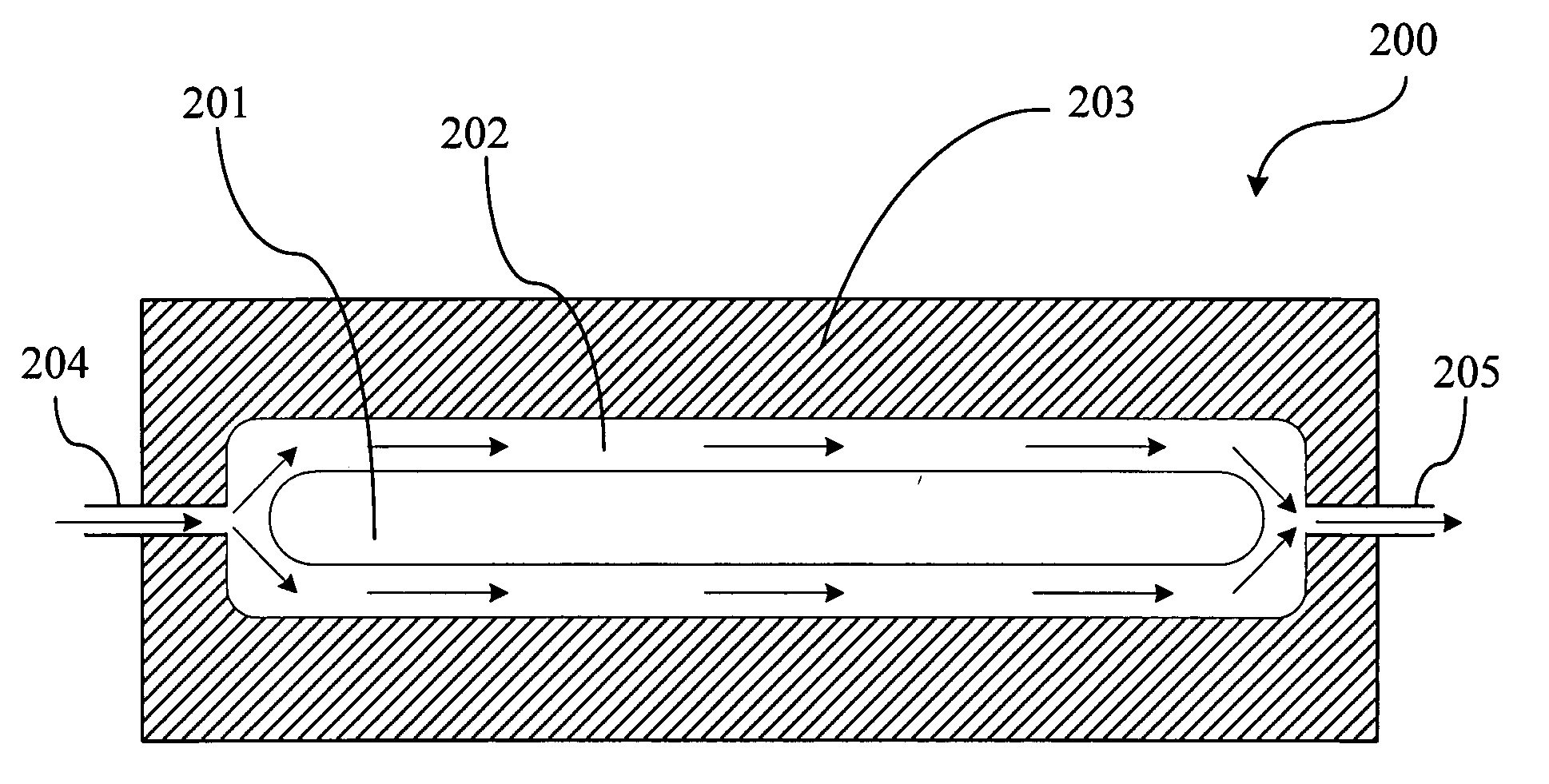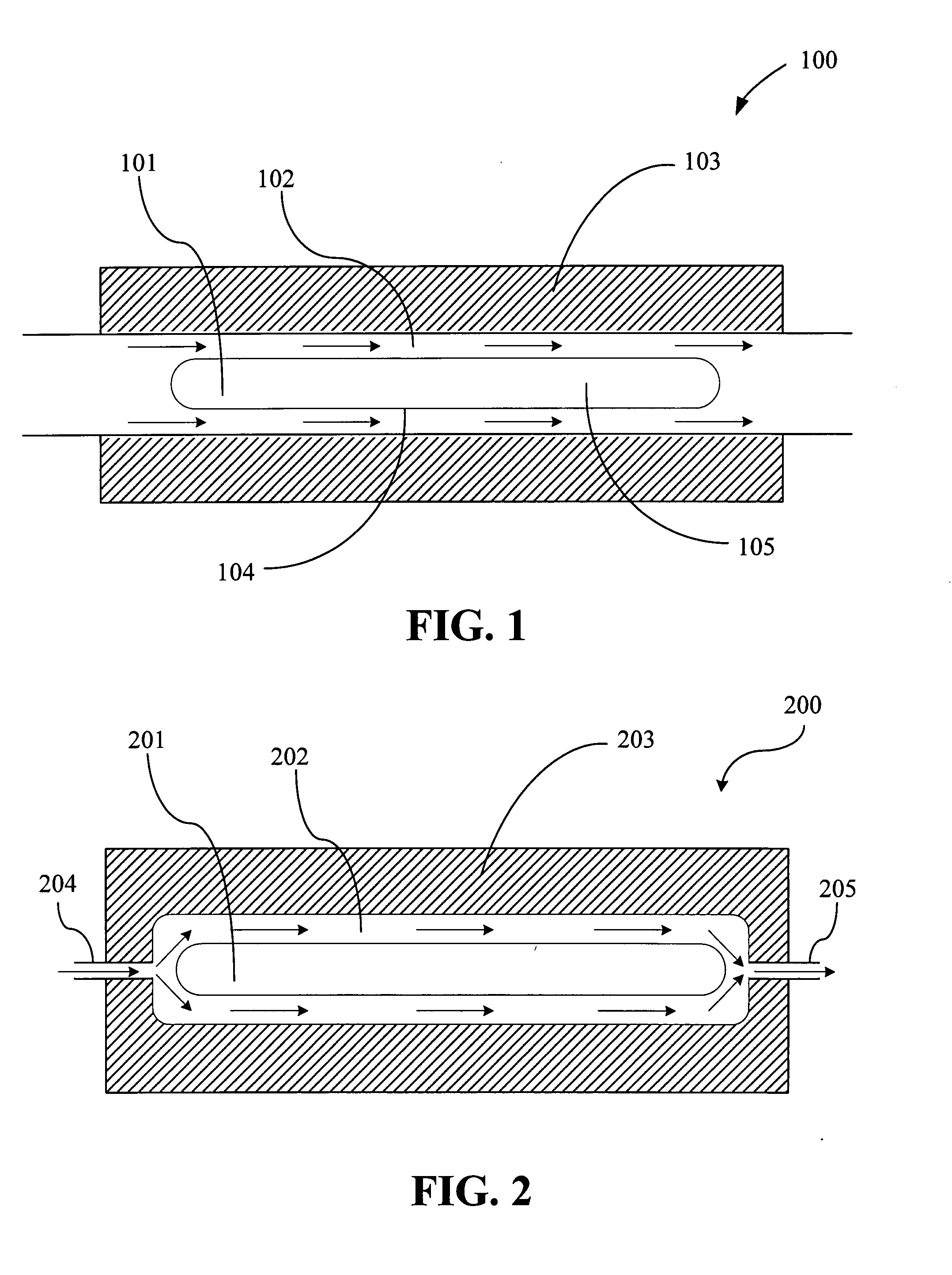Method and apparatus for treating materials using electrodeless lamps
- Summary
- Abstract
- Description
- Claims
- Application Information
AI Technical Summary
Benefits of technology
Problems solved by technology
Method used
Image
Examples
Embodiment Construction
[0023]A method for controlling the peak output wavelengths of electrodeless lamps and maintaining them at desired wavelengths indefinitely is described. The method extends across the spectrum of electrodeless lamp output wavelengths.
[0024]A significant discovery for water purification, the invention also permits uses of electrodeless lamps in curing and hazardous material remediation applications where they previously were not viable. For example, many polymer systems are engineered to cure with light centered at a wavelength of about 254 nm (nanometers) and spanning a wavelength of from about 240 nm to about 265 nm, which also happens to be the best germicidal frequency for treating water. In many industrial applications ordinary electrode lamps are used for the ultraviolet curing source because they are more easily controlled than are electrodeless lamps and do not runaway thermally as do electrodeless lamps. Using the invention an electrodeless lamp can now reach and maintain the...
PUM
 Login to View More
Login to View More Abstract
Description
Claims
Application Information
 Login to View More
Login to View More - R&D
- Intellectual Property
- Life Sciences
- Materials
- Tech Scout
- Unparalleled Data Quality
- Higher Quality Content
- 60% Fewer Hallucinations
Browse by: Latest US Patents, China's latest patents, Technical Efficacy Thesaurus, Application Domain, Technology Topic, Popular Technical Reports.
© 2025 PatSnap. All rights reserved.Legal|Privacy policy|Modern Slavery Act Transparency Statement|Sitemap|About US| Contact US: help@patsnap.com



